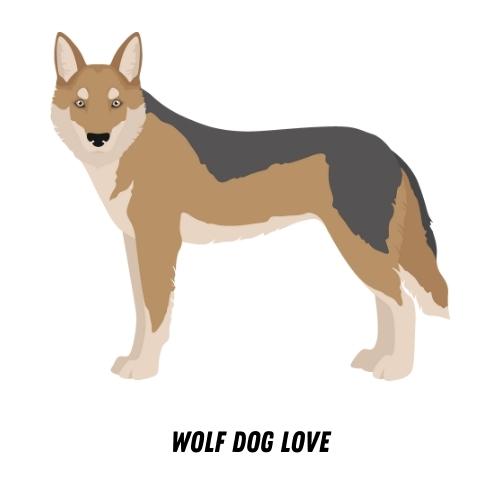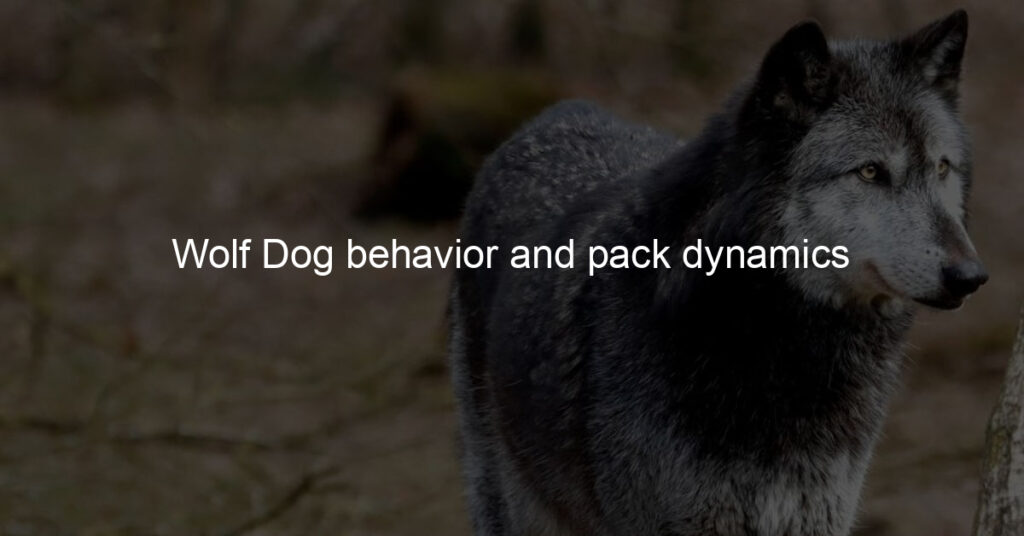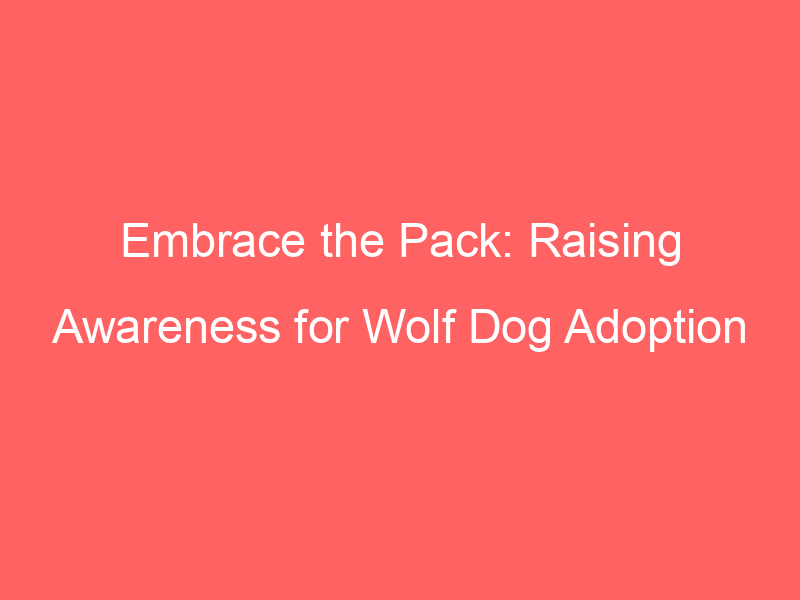Are you curious about wolf dogs and their behavior? Are you considering getting one of these beautiful animals as a pet, but have questions about how they will fit in with your family? If so, this blog post is for you! Here we’ll go over the basics of wolf-dog behavior and pack dynamics, giving you all the information that you need before deciding whether or not to add a four-legged friend to your home. From understanding the hierarchical structure and learning communication styles to getting tips on introducing a new member into the pack – we have it all covered.
What are the dynamics of a Wolf Dog pack?
The dynamic of a Wolf Dog pack is a fascinating thing to watch. As both wild and domesticated animals, Wolf Dogs have complex social behaviors which include hierarchy and close relationships with their caretakers.
These hybrid creatures are extremely intelligent, capable of being trained to understand commands like a domestic dog does, as well as being able to entertain themselves for hours at a time in the outdoors. Wolf Dogs form tight-knit families, forming hierarchies through testing displays of dominance dominant behavior than protecting other members like an extended family.
A single alpha usually leads the pack while younger Wolf Dogs often follow the lead and guidance of the alpha, learning social restraint and order within the group. They offer unconditional love between pack members and can even be taught how to interact with strange people or livestock safely. Watching such an amazing dynamic truly is captivating!
How does Wolf Dog show dominance in a pack?
Wolves live and work together in packs and to maintain a strong and balanced functioning system, they need to establish dominance within the group. Wolf dogs demonstrate this through body language. If one wolf dog is feeling dominant, it will carry itself tall, having its heads up and taking long strides with an open chest. Whereas, if they feel submissive they will adopt lower body language like avoiding eye contact and moving around slowly with bent ears or tucked tails.
They may also communicate by growling or howling to communicate that either their alpha is present a warning sign of aggression or a call for attention from the pack members. Wolf dogs use various methods of communication when wanting to assert dominance within their pack.
What are the positions in a Wolf Dog pack?
Wolves usually live in packs that are made up of a male and female Alpha, as well as their offspring. The Alphas maintain control of the pack with the help of several Beta wolves who act as disciplinarians and make sure rules are followed.
Gamma wolves subordinate to Betas and act as sentinels on the border of their territory, while Delta wolves are the social mediators between Alpha and other members. Wolves may even use Puppy Leaders to teach younger generations how to coordinate within a pack. Ultimately, how the Wolf Dog pack works depends on the size and hierarchy established by its Alphas, making it a unique structure every time!
What is the social structure of Wolf Dog packs?
The social structure in wolf-dog packs is fascinating. Each pack usually consists of several adult wolves and their offspring, who establish their ranking of social hierarchy based on respect, trust, and loyalty. Most often, the alpha male is the leader of the pack and sets most rules for its members.
He leads the members during a hunt, making decisions about where to look for food and when to attack prey. The alpha females of both genders take on different roles within the pack too — they provide support and stability that maintain a strong sense of unity among its members. In addition, wolves cooperate instinctively which allows them to work together as a team while hunting or protecting their territory from intruders!
Do Wolf Dogs have pack dynamics?
Wolf Dogs, or wolf hybrids, have been around for centuries. They retain many of the positive characteristics of wolves, such as loyalty and intelligence, but also a few of their less desirable habits like an affinity for howling at night. So it’s only natural to wonder if Wolf Dogs display pack dynamics similar to their wild ancestors.
The answer is yes—Wolf Dogs may form close relationships, with one individual acting as the Alpha dog and even mating by wolf social hierarchies. Many owners report their Wolf Dogs to show strong family-like bonds with each other and can be quite protective of them too. It’s important to remember that while they are part wolves, they also need plenty of love and attention from us humans to feel comfortable being part of a household.
Does Wolf Dog respect an alpha?
Wolf dogs, hybrids created from a mix of Germans Shepherds and Gray Wolves, are hailed for their intelligence, loyalty, and strength. But do they respect an alpha? The short answer is yes—Wolf Dogs are open to structure and thrive when presented with clear expectations from their pack leader.
As a result, it’s important to establish yourself as the alpha right away to ensure that your Wolf Dog knows who’s in charge rather than trying to claim authority later on down the road. When done successfully, the results are often astonishing: well-behaved animals with obedience that many domestic breeds can’t compete with. There’s truly something special about these majestic creatures, so don’t forget the value of establishing good leadership skills early on!
Conclusion
Even though wolves and dogs are related, it’s easy to forget that they mainly differ in social behavior. Wolves prioritize family loyalty, whereas dogs can bond with anyone easily. Despite these differences, both species of animal have been crossbred in recent times to produce wolf-dog hybrids. The behavior of these animals is highly unpredictable and still relatively unknown, but understanding pack dynamics between the various animals (including humans) allows for better control of their tendencies. Wolf Dogs can be loyal and loving with owners who dedicate themselves to forming strong relationships with them; however, for this kind of close-knit relationship to take place, the environment has to be secure and the owner must use only positive reinforcement as a way of training the animal.








